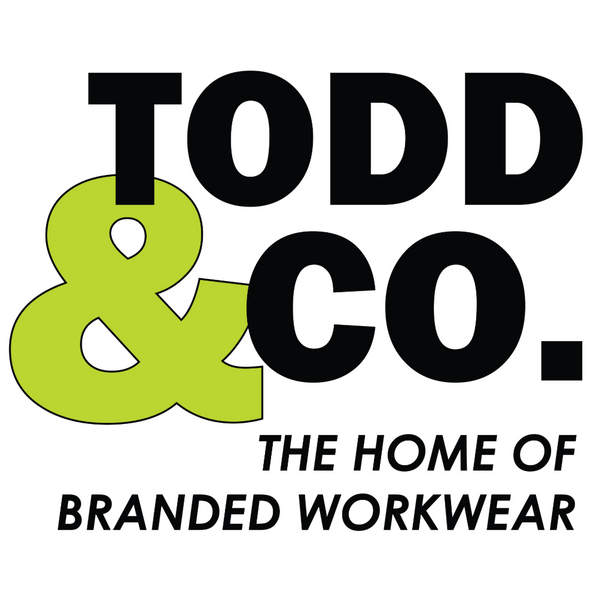At Todd and Co, we specialise in creating high-quality customised apparel that tells your story, and one of the most timeless techniques we use is embroidery. But what is clothing embroidery, exactly, and why has it remained such a popular option for branding and personalisation?
In this post, we’ll dive into the history, process, types, and benefits of embroidery in clothing. Whether you're a business looking to elevate your uniforms or an individual looking to add a personal touch to your wardrobe, this guide is for you.
A Brief History of Embroidery
Clothing embroidery has been around for thousands of years. Some of the earliest examples date back to ancient China, Egypt, and Mesopotamia. Historically, embroidery was a sign of wealth and prestige, as it was often done by hand using precious threads and intricate patterns.
With the industrial revolution came the invention of embroidery machines, which transformed the practice from an artisanal craft into a scalable manufacturing technique. Today, embroidery remains an art form, but modern technology has made it more accessible and affordable for businesses and individuals alike.
What is clothing embroidery?
Clothing embroidery is the process of decorating fabric with needle and thread or yarn to create a design, logo, or text. It involves stitching directly onto the fabric, creating a textured, durable design that stands the test of time. Unlike printing methods that apply ink or heat transfers, embroidery becomes part of the fabric itself.
This method is often used on hats, shirts, jackets, uniforms, and other apparel to create a high-end, professional look. It’s especially popular for corporate branding, school uniforms, sports team logos, and personalised gifts.
How Does Embroidery Work?
There are two main ways to create embroidered clothing: hand embroidery and machine embroidery.
-
Hand embroidery is a traditional technique where designs are stitched by hand. This method is labour-intensive and time-consuming, but it allows for incredible detail and personal touch. It's more common in bespoke fashion and decorative pieces.
-
Machine embroidery uses computerised machines to stitch designs quickly and consistently. A digital file (often in .DST or .PES format) tells the machine how to sew the pattern, including the stitch type, colour changes, and sequence. This is the most common method for business use because it’s efficient and scalable.
At Todd and Co, we use advanced embroidery machines to ensure every design is stitched with precision and durability. From the first digital mock-up to the final stitch, quality is our priority.
Types of Embroidery in Clothing
Understanding what is clothing embroidery also means exploring the different types used in apparel. Here are some of the most common:
-
Flat embroidery: This is the standard method where the design is stitched flat onto the garment's surface. It's clean, versatile, and ideal for logos and text.
-
3D puff embroidery: This technique uses a foam insert to raise the embroidery off the fabric, creating a three-dimensional look. It's commonly used on caps and outerwear for a bold effect.
-
Appliqué embroidery: This involves sewing a piece of fabric onto the garment and embroidering around it. It's great for larger designs and adds texture and contrast.
-
Patch embroidery: Rather than stitching directly onto clothing, patches are embroidered separately and then sewn or heat-applied to the garment. This is useful for uniforms, badges, and branding that may need to be swapped out or replaced.
Benefits of Embroidered Clothing
So, what makes embroidery a preferred choice for clothing personalisation?
-
Durability: Embroidered designs are long-lasting and resistant to fading, even after many washes. This makes them ideal for workwear and uniforms.
-
Professional appearance: Embroidery gives garments a high-quality, polished look. It’s a great way to elevate your brand and leave a lasting impression.
-
Customisation: With embroidery, you can personalise each piece with names, logos, or designs to reflect your unique identity.
-
Versatility: Embroidery works on a wide range of materials including cotton, polyester, fleece, and denim.
-
Eco-friendly options: Unlike some printing methods, embroidery doesn’t require harmful chemicals or large amounts of water, making it a more sustainable option when done right.
When Should You Choose Embroidery?
Embroidery is best suited for garments that will be worn frequently or need to project a professional image. If you’re ordering uniforms, promotional apparel, or corporate gifts, embroidery provides the durability and style that printed methods might not match.
However, if you’re dealing with lightweight fabrics or need to reproduce complex photographic designs, other methods like screen printing or DTG (direct-to-garment) printing might be better suited.
At Todd and Co, we can help you decide on the right technique based on your goals, budget, and garment type.
Final Thoughts
Understanding what is clothing embroidery is the first step to creating customised apparel that truly stands out. Whether you’re after subtle branding or bold designs, embroidery adds a level of quality and craftsmanship that makes a lasting impact.
If you’re ready to bring your vision to life, get in touch with the team at Todd and Co. We’re here to help you every stitch of the way.

